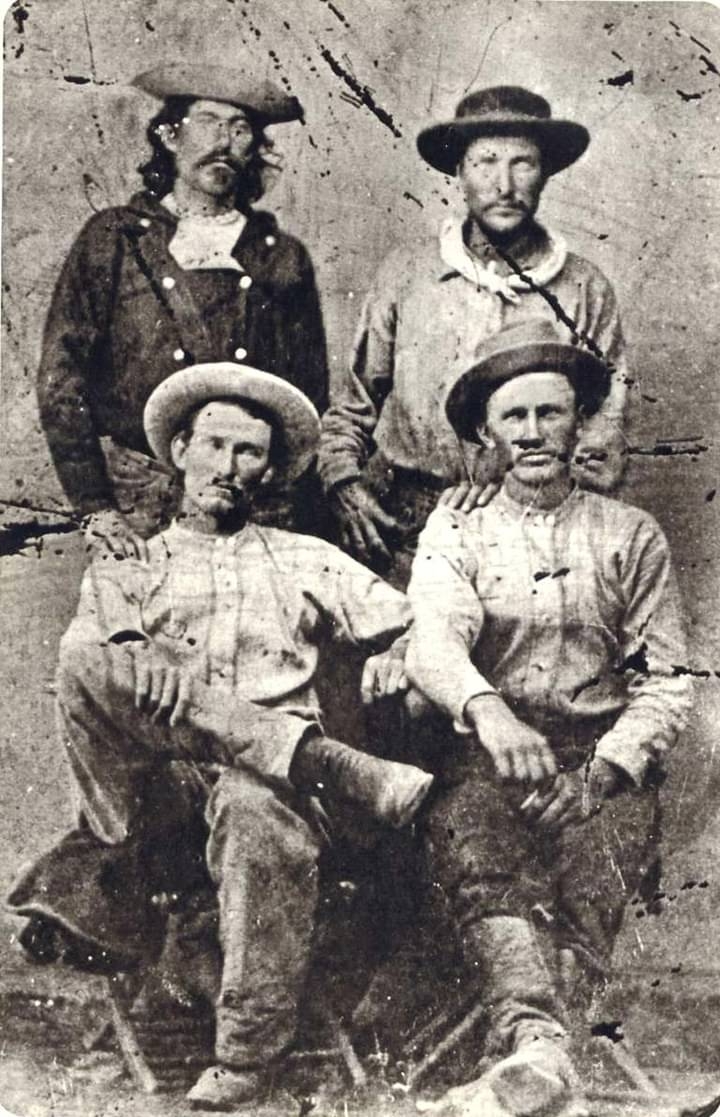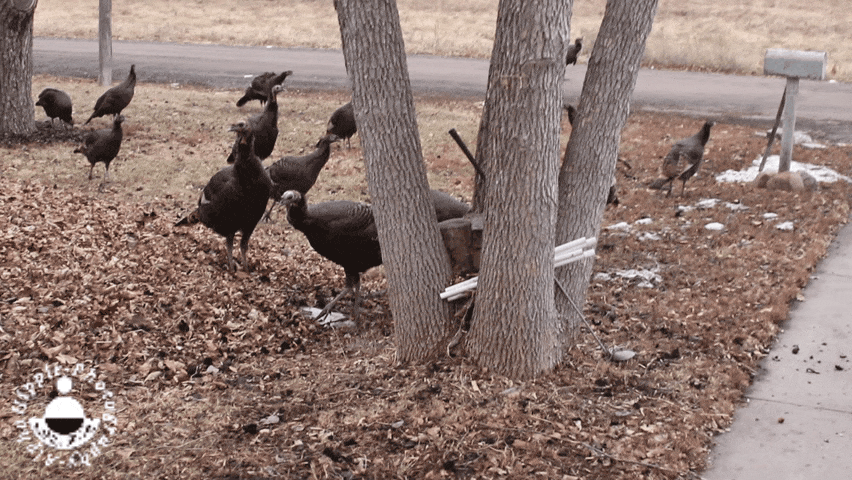"It is obviously un-American for the government to develop a ‘hit list’ of citizens to mute in the public square through secret pressure on communications monopolies."
This Country Can't Afford A SCOTUS Weak On Internet Censorship
Joy Pullmann
The Biden administration attempted to distract the Supreme Court from the voluminous evidence of federal abuse of Americans’ speech rights during oral arguments in Murthy v. Missouri Monday. It sounded like several justices followed the feds’ waving red flag.
“The government may not use coercive threats to suppress speech, but it is entitled to speak for itself by informing, persuading, or criticizing private speakers,” said Biden administration lawyer Brian Fletcher in his opening remarks. He and several justices asserted government speech prerogatives that would flip the Constitution upside down.
The government doesn’t have constitutional rights. Constitutional rights belong to the people and restrain the government. The people’s right to speak may not be abridged. Government officials’ speaking, in their official capacities, may certainly be abridged. Indeed, it often must be, precisely to restrict officials from abusing the state’s monopoly on violence to bully citizens into serfdom.
It is obviously un-American and unconstitutional for the government to develop a “hit list” of citizens to mute in the public square through secret pressure on communications monopolies beholden to the government for their monopoly powers. There is simply no way it’s “protected speech” for the feds to use intermediaries to silence anyone who disagrees with them on internet forums where the majority of the nation’s political organizing and information dissemination occurs.
Bullying, Not the Bully Pulpit
What’s happening is not government expressing its views to media, or “encouraging press to suppress their own speech,” as Justice Elena Kagan put it. This is government bullying third parties to suppress Americans’ speech that officials dislike.
In the newspaper analogy, it would be like government threatening an IRS audit or Equal Employment Opportunity Commission (EEOC) investigation, or pulling the business license of The Washington Post if the Post published an op-ed from Jay Bhattacharya. As Norwood v. Harrison established in 1973, that’s blatantly unconstitutional. Government cannot “induce, encourage or promote private persons to accomplish what it is constitutionally forbidden to accomplish.”
Yet, notes Matt Taibbi, some justices and Fletcher “re-framed the outing of extravagantly funded, ongoing content-flagging programs, designed by veterans of foreign counterterrorism operations and targeting the domestic population, as a debate about what Fletcher called ‘classic bully pulpit exhortations.’”
Every Fake Excuse for Censorship Is Already Illegal
We have laws against all the harms the government and several justices put forth as excuses for government censorship. Terrorism is illegal. Promoting terrorism is illegal, as an incitement to treason and violence. Inciting children to injure or murder themselves by jumping out windows — a “hypothetical” brought up by Justice Ketanji Brown Jackson and discussed at length in oral arguments — is illegal.
If someone is spreading terrorist incitements to violence on Facebook, law enforcement needs to go after the terrorist plotters, not Facebook. Just like it’s unjust to punish gun, knife, and tire iron manufacturers for the people who use their products to murder, it’s unjust and unconstitutional for government to effectively commandeer Facebook under the pretext of all the evils people use it to spread. If they have a problem with those evils, they should address those evils directly, not pressure Facebook to do what they can’t get through Congress like it’s some kind of substitute legislature.
It’s also ridiculous to, as Jackson and Fletcher did in oral argument, assume that the government is the only possible solution to every social ill. Do these hypothetically window-jumping children not have parents? Teachers? Older siblings? Neighbors? Would the social media companies not have an interest in preventing their products from being used to promote death, and wouldn’t that be an easy thing to explain publicly? Apparently, Jackson couldn’t conceive of any other solution to problems like these than government censorship, when our society has handled far bigger problems like war, pandemics, and foreign invasion without government censorship for 250 years!
Voters Auditing Government Is Exactly How Our System Should Work
Fletcher described it as a “problem” that in this case, “two states and five individuals are trying to use the Article III courts to audit all of the executive branch’s communications with and about social media platforms.” That’s called transparency, and it’s only a problem if the government is trying to escape accountability to voters for its actions.
The people have a fundamental right to audit what their government is doing with public positions, institutions, and funds! How do we have government by consent of the governed if the people can have no idea what their government is doing?
Under federal laws, all communications like those this lawsuit uncovered are public records. Yet these public records are really hard to get. The executive branch has been effectively nullifying open records laws by absurdly lengthening disclosure times — to as long as 636 days — increasingly forcing citizens to wage expensive lawsuits to get federal agencies to cough up records years beyond the legal deadline.
Congress should pass a law forcing the automatic disclosure of all government communications with tech monopolies that don’t concern actual classified information and “national security” designations, which the government expands unlawfully to avoid transparency. No justice should support government secrecy about its speech pressure efforts outside of legitimate national security actions.
Government Is So Big, It’s Always Coercive
Fletcher’s argument also claimed to draw a line between government persuasion and government coercion. The size and minute harassment powers of our government long ago obliterated any such line, if it ever existed. Federal agencies now have the power to try citizens in non-Article III courts, outside constitutional protections for due process. Citizens can be bankrupted long before they finally get to appeal to a real court. That’s why most of them just do whatever the agencies say, even when it’s clearly unlawful.
Federal agencies demand power over almost every facet of life, from puddles in people’s backyards to the temperature of cheese served in a tiny restaurant. If they put a target on any normal citizen’s back, he goes bankrupt after regulatory torture.
As Franklin Roosevelt’s “brain trust” planned, government is now the “senior partner” of every business, giving every “request” from government officials automatic coercion power. Federal agencies have six ways from Sunday of getting back at a noncompliant company, from the EEOC to the Occupational Safety and Health Administration to the Environmental Protection Agency to Health and Human Services to Securities and Exchange Commission investigations and more. Use an accurate pronoun? Investigation. Hire “one too many” white guys? Investigation.
TikTok legislation going through Congress right now would codify federal power to seize social media companies accused of being owned by foreign interests. Shortly after he acquired X, Elon Musk faced a regulatory shakedown costing him tens of millions, and more on the way. He has money like that, but the rest of us don’t.
Speech from a private citizen does not have the threat of violence behind it. Speech from a government official, on the other hand, absolutely does and always has. Government officials have powers that other people don’t, and those powers are easily abused, which is exactly why we have a Constitution. SCOTUS needs to take this crucial context into account, making constitutional protections stronger because the government is far, far outside its constitutional bounds.
Big tech companies’ very business model depends on government regulators and can be destroyed — or kneecapped — at the stroke of an activist president’s pen. Or, at least, that’s what the president said when Facebook and Twitter didn’t do what he wanted: Section 230 should “immediately be revoked.” This is a president who claims the executive power to unilaterally rewrite laws, ignore laws, and ignore Supreme Court decisions. It’s a president who issues orders as press releases so they go into effect months before they can even begin to be challenged in court.
Constitutionally Protected Speech Isn’t Terrorism
If justices buy the administration’s nice-guy pretenses of “concern about terrorism,” and “once in a lifetime pandemic measures,” they didn’t read the briefs in this case and see that is simply a cover for the U.S. government turning counterterrorism tools on its own citizens in an attempt to control election outcomes. This is precisely what the First Amendment was designed to check, and we Americans need our Supreme Court to understand that and act to protect us. Elections mean nothing when the government is secretly keeping voters from talking to each other.
The Supreme Court may not be able to return the country to full constitutional government by eradicating the almost entirely unconstitutional administrative state. But it should enforce as many constitutional boundaries as possible on such agencies. That clearly includes prohibiting all of government from outsourcing to allegedly “private” organizations actions that would be illegal for the government to take.
That includes not just coercive instructions to social media companies, but also developing social media censorship tools and organizations as cutouts for the rogue security state that is targeting peaceful citizens instead of actual terrorists. Even false speech is not domestic terrorism, and no clearheaded Supreme Court justice looking at the evidence could let the Biden administration weaponize antiterrorism measures to strip law-abiding Americans of our fundamental human rights.
Joy Pullmann is executive editor of The Federalist, a happy wife, and the mother of six children. Her ebooks include "Classic Books For Young Children," and "101 Strategies For Living Well Amid Inflation." An 18-year education and politics reporter, Joy has testified before nearly two dozen legislatures on education policy and appeared on major media from Fox News to Ben Shapiro to Dennis Prager. Joy is a grateful graduate of the Hillsdale College honors and journalism programs who identifies as native American and gender natural. Her traditionally published books include "The Education Invasion: How Common Core Fights Parents for Control of American Kids," from Encounter Books.
https://thefederalist.com/2024/03/21/this-country-cannot-afford-a-weak-supreme-court-decision-on-internet-censorship/
Join @MartinKulldorf
This Country Can't Afford A SCOTUS Weak On Internet Censorship
Joy Pullmann
The Biden administration attempted to distract the Supreme Court from the voluminous evidence of federal abuse of Americans’ speech rights during oral arguments in Murthy v. Missouri Monday. It sounded like several justices followed the feds’ waving red flag.
“The government may not use coercive threats to suppress speech, but it is entitled to speak for itself by informing, persuading, or criticizing private speakers,” said Biden administration lawyer Brian Fletcher in his opening remarks. He and several justices asserted government speech prerogatives that would flip the Constitution upside down.
The government doesn’t have constitutional rights. Constitutional rights belong to the people and restrain the government. The people’s right to speak may not be abridged. Government officials’ speaking, in their official capacities, may certainly be abridged. Indeed, it often must be, precisely to restrict officials from abusing the state’s monopoly on violence to bully citizens into serfdom.
It is obviously un-American and unconstitutional for the government to develop a “hit list” of citizens to mute in the public square through secret pressure on communications monopolies beholden to the government for their monopoly powers. There is simply no way it’s “protected speech” for the feds to use intermediaries to silence anyone who disagrees with them on internet forums where the majority of the nation’s political organizing and information dissemination occurs.
Bullying, Not the Bully Pulpit
What’s happening is not government expressing its views to media, or “encouraging press to suppress their own speech,” as Justice Elena Kagan put it. This is government bullying third parties to suppress Americans’ speech that officials dislike.
In the newspaper analogy, it would be like government threatening an IRS audit or Equal Employment Opportunity Commission (EEOC) investigation, or pulling the business license of The Washington Post if the Post published an op-ed from Jay Bhattacharya. As Norwood v. Harrison established in 1973, that’s blatantly unconstitutional. Government cannot “induce, encourage or promote private persons to accomplish what it is constitutionally forbidden to accomplish.”
Yet, notes Matt Taibbi, some justices and Fletcher “re-framed the outing of extravagantly funded, ongoing content-flagging programs, designed by veterans of foreign counterterrorism operations and targeting the domestic population, as a debate about what Fletcher called ‘classic bully pulpit exhortations.’”
Every Fake Excuse for Censorship Is Already Illegal
We have laws against all the harms the government and several justices put forth as excuses for government censorship. Terrorism is illegal. Promoting terrorism is illegal, as an incitement to treason and violence. Inciting children to injure or murder themselves by jumping out windows — a “hypothetical” brought up by Justice Ketanji Brown Jackson and discussed at length in oral arguments — is illegal.
If someone is spreading terrorist incitements to violence on Facebook, law enforcement needs to go after the terrorist plotters, not Facebook. Just like it’s unjust to punish gun, knife, and tire iron manufacturers for the people who use their products to murder, it’s unjust and unconstitutional for government to effectively commandeer Facebook under the pretext of all the evils people use it to spread. If they have a problem with those evils, they should address those evils directly, not pressure Facebook to do what they can’t get through Congress like it’s some kind of substitute legislature.
It’s also ridiculous to, as Jackson and Fletcher did in oral argument, assume that the government is the only possible solution to every social ill. Do these hypothetically window-jumping children not have parents? Teachers? Older siblings? Neighbors? Would the social media companies not have an interest in preventing their products from being used to promote death, and wouldn’t that be an easy thing to explain publicly? Apparently, Jackson couldn’t conceive of any other solution to problems like these than government censorship, when our society has handled far bigger problems like war, pandemics, and foreign invasion without government censorship for 250 years!
Voters Auditing Government Is Exactly How Our System Should Work
Fletcher described it as a “problem” that in this case, “two states and five individuals are trying to use the Article III courts to audit all of the executive branch’s communications with and about social media platforms.” That’s called transparency, and it’s only a problem if the government is trying to escape accountability to voters for its actions.
The people have a fundamental right to audit what their government is doing with public positions, institutions, and funds! How do we have government by consent of the governed if the people can have no idea what their government is doing?
Under federal laws, all communications like those this lawsuit uncovered are public records. Yet these public records are really hard to get. The executive branch has been effectively nullifying open records laws by absurdly lengthening disclosure times — to as long as 636 days — increasingly forcing citizens to wage expensive lawsuits to get federal agencies to cough up records years beyond the legal deadline.
Congress should pass a law forcing the automatic disclosure of all government communications with tech monopolies that don’t concern actual classified information and “national security” designations, which the government expands unlawfully to avoid transparency. No justice should support government secrecy about its speech pressure efforts outside of legitimate national security actions.
Government Is So Big, It’s Always Coercive
Fletcher’s argument also claimed to draw a line between government persuasion and government coercion. The size and minute harassment powers of our government long ago obliterated any such line, if it ever existed. Federal agencies now have the power to try citizens in non-Article III courts, outside constitutional protections for due process. Citizens can be bankrupted long before they finally get to appeal to a real court. That’s why most of them just do whatever the agencies say, even when it’s clearly unlawful.
Federal agencies demand power over almost every facet of life, from puddles in people’s backyards to the temperature of cheese served in a tiny restaurant. If they put a target on any normal citizen’s back, he goes bankrupt after regulatory torture.
As Franklin Roosevelt’s “brain trust” planned, government is now the “senior partner” of every business, giving every “request” from government officials automatic coercion power. Federal agencies have six ways from Sunday of getting back at a noncompliant company, from the EEOC to the Occupational Safety and Health Administration to the Environmental Protection Agency to Health and Human Services to Securities and Exchange Commission investigations and more. Use an accurate pronoun? Investigation. Hire “one too many” white guys? Investigation.
TikTok legislation going through Congress right now would codify federal power to seize social media companies accused of being owned by foreign interests. Shortly after he acquired X, Elon Musk faced a regulatory shakedown costing him tens of millions, and more on the way. He has money like that, but the rest of us don’t.
Speech from a private citizen does not have the threat of violence behind it. Speech from a government official, on the other hand, absolutely does and always has. Government officials have powers that other people don’t, and those powers are easily abused, which is exactly why we have a Constitution. SCOTUS needs to take this crucial context into account, making constitutional protections stronger because the government is far, far outside its constitutional bounds.
Big tech companies’ very business model depends on government regulators and can be destroyed — or kneecapped — at the stroke of an activist president’s pen. Or, at least, that’s what the president said when Facebook and Twitter didn’t do what he wanted: Section 230 should “immediately be revoked.” This is a president who claims the executive power to unilaterally rewrite laws, ignore laws, and ignore Supreme Court decisions. It’s a president who issues orders as press releases so they go into effect months before they can even begin to be challenged in court.
Constitutionally Protected Speech Isn’t Terrorism
If justices buy the administration’s nice-guy pretenses of “concern about terrorism,” and “once in a lifetime pandemic measures,” they didn’t read the briefs in this case and see that is simply a cover for the U.S. government turning counterterrorism tools on its own citizens in an attempt to control election outcomes. This is precisely what the First Amendment was designed to check, and we Americans need our Supreme Court to understand that and act to protect us. Elections mean nothing when the government is secretly keeping voters from talking to each other.
The Supreme Court may not be able to return the country to full constitutional government by eradicating the almost entirely unconstitutional administrative state. But it should enforce as many constitutional boundaries as possible on such agencies. That clearly includes prohibiting all of government from outsourcing to allegedly “private” organizations actions that would be illegal for the government to take.
That includes not just coercive instructions to social media companies, but also developing social media censorship tools and organizations as cutouts for the rogue security state that is targeting peaceful citizens instead of actual terrorists. Even false speech is not domestic terrorism, and no clearheaded Supreme Court justice looking at the evidence could let the Biden administration weaponize antiterrorism measures to strip law-abiding Americans of our fundamental human rights.
Joy Pullmann is executive editor of The Federalist, a happy wife, and the mother of six children. Her ebooks include "Classic Books For Young Children," and "101 Strategies For Living Well Amid Inflation." An 18-year education and politics reporter, Joy has testified before nearly two dozen legislatures on education policy and appeared on major media from Fox News to Ben Shapiro to Dennis Prager. Joy is a grateful graduate of the Hillsdale College honors and journalism programs who identifies as native American and gender natural. Her traditionally published books include "The Education Invasion: How Common Core Fights Parents for Control of American Kids," from Encounter Books.
https://thefederalist.com/2024/03/21/this-country-cannot-afford-a-weak-supreme-court-decision-on-internet-censorship/
Join @MartinKulldorf
"It is obviously un-American for the government to develop a ‘hit list’ of citizens to mute in the public square through secret pressure on communications monopolies."
This Country Can't Afford A SCOTUS Weak On Internet Censorship
Joy Pullmann
The Biden administration attempted to distract the Supreme Court from the voluminous evidence of federal abuse of Americans’ speech rights during oral arguments in Murthy v. Missouri Monday. It sounded like several justices followed the feds’ waving red flag.
“The government may not use coercive threats to suppress speech, but it is entitled to speak for itself by informing, persuading, or criticizing private speakers,” said Biden administration lawyer Brian Fletcher in his opening remarks. He and several justices asserted government speech prerogatives that would flip the Constitution upside down.
The government doesn’t have constitutional rights. Constitutional rights belong to the people and restrain the government. The people’s right to speak may not be abridged. Government officials’ speaking, in their official capacities, may certainly be abridged. Indeed, it often must be, precisely to restrict officials from abusing the state’s monopoly on violence to bully citizens into serfdom.
It is obviously un-American and unconstitutional for the government to develop a “hit list” of citizens to mute in the public square through secret pressure on communications monopolies beholden to the government for their monopoly powers. There is simply no way it’s “protected speech” for the feds to use intermediaries to silence anyone who disagrees with them on internet forums where the majority of the nation’s political organizing and information dissemination occurs.
Bullying, Not the Bully Pulpit
What’s happening is not government expressing its views to media, or “encouraging press to suppress their own speech,” as Justice Elena Kagan put it. This is government bullying third parties to suppress Americans’ speech that officials dislike.
In the newspaper analogy, it would be like government threatening an IRS audit or Equal Employment Opportunity Commission (EEOC) investigation, or pulling the business license of The Washington Post if the Post published an op-ed from Jay Bhattacharya. As Norwood v. Harrison established in 1973, that’s blatantly unconstitutional. Government cannot “induce, encourage or promote private persons to accomplish what it is constitutionally forbidden to accomplish.”
Yet, notes Matt Taibbi, some justices and Fletcher “re-framed the outing of extravagantly funded, ongoing content-flagging programs, designed by veterans of foreign counterterrorism operations and targeting the domestic population, as a debate about what Fletcher called ‘classic bully pulpit exhortations.’”
Every Fake Excuse for Censorship Is Already Illegal
We have laws against all the harms the government and several justices put forth as excuses for government censorship. Terrorism is illegal. Promoting terrorism is illegal, as an incitement to treason and violence. Inciting children to injure or murder themselves by jumping out windows — a “hypothetical” brought up by Justice Ketanji Brown Jackson and discussed at length in oral arguments — is illegal.
If someone is spreading terrorist incitements to violence on Facebook, law enforcement needs to go after the terrorist plotters, not Facebook. Just like it’s unjust to punish gun, knife, and tire iron manufacturers for the people who use their products to murder, it’s unjust and unconstitutional for government to effectively commandeer Facebook under the pretext of all the evils people use it to spread. If they have a problem with those evils, they should address those evils directly, not pressure Facebook to do what they can’t get through Congress like it’s some kind of substitute legislature.
It’s also ridiculous to, as Jackson and Fletcher did in oral argument, assume that the government is the only possible solution to every social ill. Do these hypothetically window-jumping children not have parents? Teachers? Older siblings? Neighbors? Would the social media companies not have an interest in preventing their products from being used to promote death, and wouldn’t that be an easy thing to explain publicly? Apparently, Jackson couldn’t conceive of any other solution to problems like these than government censorship, when our society has handled far bigger problems like war, pandemics, and foreign invasion without government censorship for 250 years!
Voters Auditing Government Is Exactly How Our System Should Work
Fletcher described it as a “problem” that in this case, “two states and five individuals are trying to use the Article III courts to audit all of the executive branch’s communications with and about social media platforms.” That’s called transparency, and it’s only a problem if the government is trying to escape accountability to voters for its actions.
The people have a fundamental right to audit what their government is doing with public positions, institutions, and funds! How do we have government by consent of the governed if the people can have no idea what their government is doing?
Under federal laws, all communications like those this lawsuit uncovered are public records. Yet these public records are really hard to get. The executive branch has been effectively nullifying open records laws by absurdly lengthening disclosure times — to as long as 636 days — increasingly forcing citizens to wage expensive lawsuits to get federal agencies to cough up records years beyond the legal deadline.
Congress should pass a law forcing the automatic disclosure of all government communications with tech monopolies that don’t concern actual classified information and “national security” designations, which the government expands unlawfully to avoid transparency. No justice should support government secrecy about its speech pressure efforts outside of legitimate national security actions.
Government Is So Big, It’s Always Coercive
Fletcher’s argument also claimed to draw a line between government persuasion and government coercion. The size and minute harassment powers of our government long ago obliterated any such line, if it ever existed. Federal agencies now have the power to try citizens in non-Article III courts, outside constitutional protections for due process. Citizens can be bankrupted long before they finally get to appeal to a real court. That’s why most of them just do whatever the agencies say, even when it’s clearly unlawful.
Federal agencies demand power over almost every facet of life, from puddles in people’s backyards to the temperature of cheese served in a tiny restaurant. If they put a target on any normal citizen’s back, he goes bankrupt after regulatory torture.
As Franklin Roosevelt’s “brain trust” planned, government is now the “senior partner” of every business, giving every “request” from government officials automatic coercion power. Federal agencies have six ways from Sunday of getting back at a noncompliant company, from the EEOC to the Occupational Safety and Health Administration to the Environmental Protection Agency to Health and Human Services to Securities and Exchange Commission investigations and more. Use an accurate pronoun? Investigation. Hire “one too many” white guys? Investigation.
TikTok legislation going through Congress right now would codify federal power to seize social media companies accused of being owned by foreign interests. Shortly after he acquired X, Elon Musk faced a regulatory shakedown costing him tens of millions, and more on the way. He has money like that, but the rest of us don’t.
Speech from a private citizen does not have the threat of violence behind it. Speech from a government official, on the other hand, absolutely does and always has. Government officials have powers that other people don’t, and those powers are easily abused, which is exactly why we have a Constitution. SCOTUS needs to take this crucial context into account, making constitutional protections stronger because the government is far, far outside its constitutional bounds.
Big tech companies’ very business model depends on government regulators and can be destroyed — or kneecapped — at the stroke of an activist president’s pen. Or, at least, that’s what the president said when Facebook and Twitter didn’t do what he wanted: Section 230 should “immediately be revoked.” This is a president who claims the executive power to unilaterally rewrite laws, ignore laws, and ignore Supreme Court decisions. It’s a president who issues orders as press releases so they go into effect months before they can even begin to be challenged in court.
Constitutionally Protected Speech Isn’t Terrorism
If justices buy the administration’s nice-guy pretenses of “concern about terrorism,” and “once in a lifetime pandemic measures,” they didn’t read the briefs in this case and see that is simply a cover for the U.S. government turning counterterrorism tools on its own citizens in an attempt to control election outcomes. This is precisely what the First Amendment was designed to check, and we Americans need our Supreme Court to understand that and act to protect us. Elections mean nothing when the government is secretly keeping voters from talking to each other.
The Supreme Court may not be able to return the country to full constitutional government by eradicating the almost entirely unconstitutional administrative state. But it should enforce as many constitutional boundaries as possible on such agencies. That clearly includes prohibiting all of government from outsourcing to allegedly “private” organizations actions that would be illegal for the government to take.
That includes not just coercive instructions to social media companies, but also developing social media censorship tools and organizations as cutouts for the rogue security state that is targeting peaceful citizens instead of actual terrorists. Even false speech is not domestic terrorism, and no clearheaded Supreme Court justice looking at the evidence could let the Biden administration weaponize antiterrorism measures to strip law-abiding Americans of our fundamental human rights.
Joy Pullmann is executive editor of The Federalist, a happy wife, and the mother of six children. Her ebooks include "Classic Books For Young Children," and "101 Strategies For Living Well Amid Inflation." An 18-year education and politics reporter, Joy has testified before nearly two dozen legislatures on education policy and appeared on major media from Fox News to Ben Shapiro to Dennis Prager. Joy is a grateful graduate of the Hillsdale College honors and journalism programs who identifies as native American and gender natural. Her traditionally published books include "The Education Invasion: How Common Core Fights Parents for Control of American Kids," from Encounter Books.
https://thefederalist.com/2024/03/21/this-country-cannot-afford-a-weak-supreme-court-decision-on-internet-censorship/
Join ➡️ @MartinKulldorf
1 Comments
0 Shares
27320 Views











